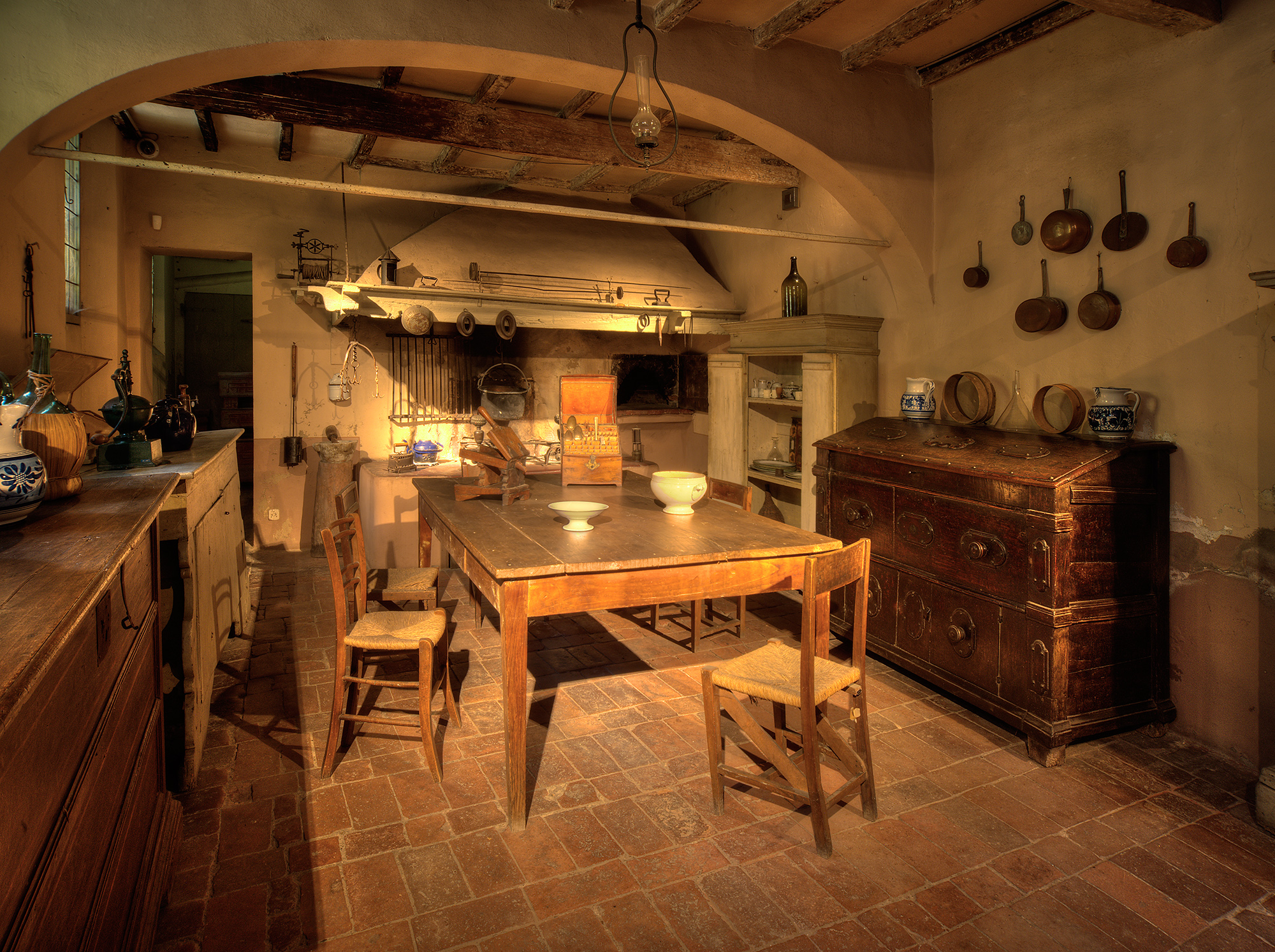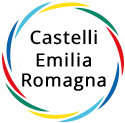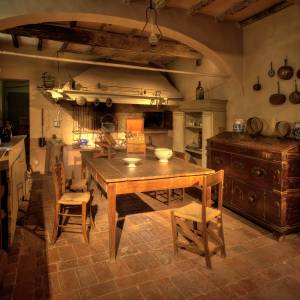Emilia Romagna Castles
Imola's Civic Museums: the historical kitchen of Palazzo Tozzoni.
Of Rocca Sforzesca

We begin our journey among the most evocative historical kitchens of the Castles of Emilia Romagna from the kitchen of a House Museum, that of Palazzo Tozzoni
We begin our journey among the most evocative historical kitchens of the Castles of Emilia Romagna from the kitchen of a House Museum, that of Palazzo Tozzoni, which together with the Rocca Sforzesca and the Museum of San Domenico is part of the Civic Museums of Imola. We choose a 'house of memory' to begin our tale because it makes for a family, domestic warmth, in a cosy space where we imagine women long ago weaving their cloth in the wood cellar, in the kitchen.
The furnishings in the kitchen of Palazzo Tozzoni are simple, of sturdy wood, made to last. The masterpiece is the large fireplace. Leaning on the hood is a long spit and in the left-hand corner the counterweight winch that turned it when it was on the fire with the meat stuck in it. On the right the large 17th-century cupboard was the heart of the kitchen, where a precious commodity was stored: flour.
What can you cook and eat in Imola based, also, on flour? Garganelli, a typical Imola dish made with flour, eggs, grated Parmesan cheese and nutmeg. At one time they were cooked and served in capon broth, but today they are often served dry and dressed with game ragout. If, on the other hand, you want to try green garganelli, know that they add a small amount of boiled, squeezed and finely chopped spinach to the dough.
Our journey through the historic kitchens of the Castelli d'Emilia Romagna continues. See you soon for our next visit to the kitchen!
Ph. Credits Photo archives Civic Museums of Imola - Sergio Oselli
The Castelli Emilia Romagna blog project is co-financed by the European Funds of the Emilia-Romagna Region - Por Fesr 2014-2020. Editing and research by Gianluca Bagnara, Francesca Maffini, Antonella Fava.
Why write about period kitchens in Emilia Romagna? The historical kitchens or the most suggestive dining rooms of castles and ancient dwellings represent in Emilia Romagna one of the most unexpected and peculiar do-it-yourself 'tourist routes' to be discovered because, during guided tours of fortresses and manor houses, going in search of period kitchens really means encountering great stories of food and wine, stories of hearths and cauldrons that represent the culinary identity of the territories, stories of iceboxes and storerooms where food, wine, oil and salt were conserved to withstand the harshest months of the year, or where foodstuffs and supplies were stored to cope with famines or sieges.
Numerous castles in Emilia Romagna, as well as abbeys and villas, are characterised precisely by the presence of rooms used centuries ago as kitchens: they were often located in the basement spaces of strongholds, strategically designed and managed to facilitate food supply, preservation and cooking operations in well-defined rooms such as those dedicated to the kitchen, pantries, cellars, ovens or pastry.
In kitchens, but not only in them, we can find large fireplaces where the ancient spits on which poultry, lambs, piglets or various types of game, often the spoils of the exclusive hunting parties of the nobility, partridges, skylarks and pigeons or snipes, were roasted.
In the kitchens we can find traces of solutions to improve or facilitate the work or processing of food by the cooks.
We can still admire old tools such as, ovens, iceboxes, pots, dishes, frying pans, grills, handicrafts with copper materials.
In the dining rooms of some castles in Emilia Romagna, service cupboards are exhibited or are exhibited on special occasions, such as theme exhibitions: tables decorated with centrepieces, trays, tablecloths, plates and spaces to keep food warm.
See you soon with the next article and new surprising manors to get to know.
The Castelli Emilia Romagna blog project is co-financed by the European Funds of the Emilia-Romagna Region - Por Fesr 2014-2020. Editing and research by Gianluca Bagnara, Francesca Maffini, Antonella Fava.

